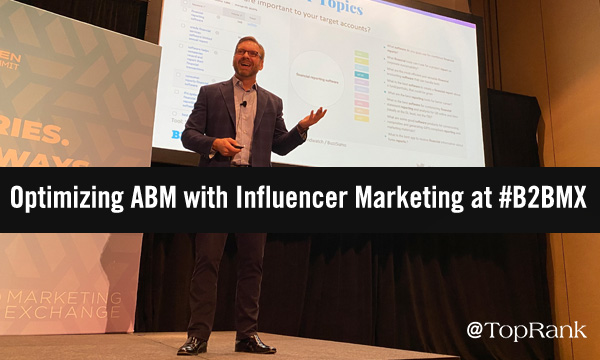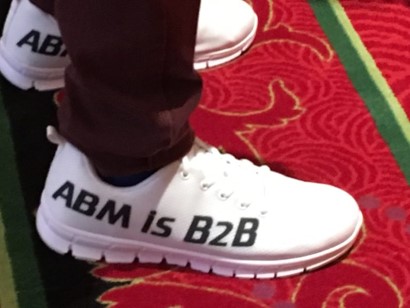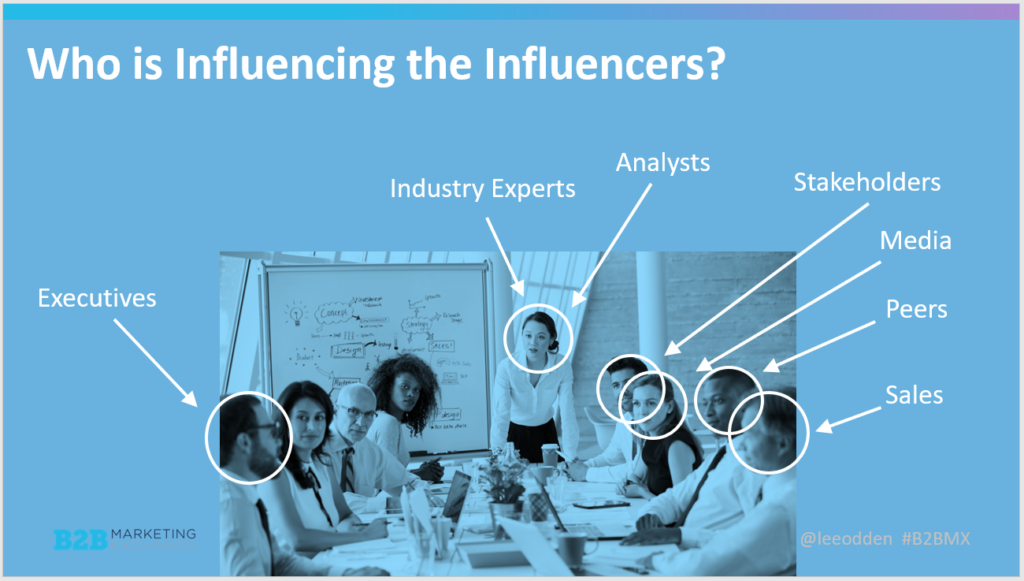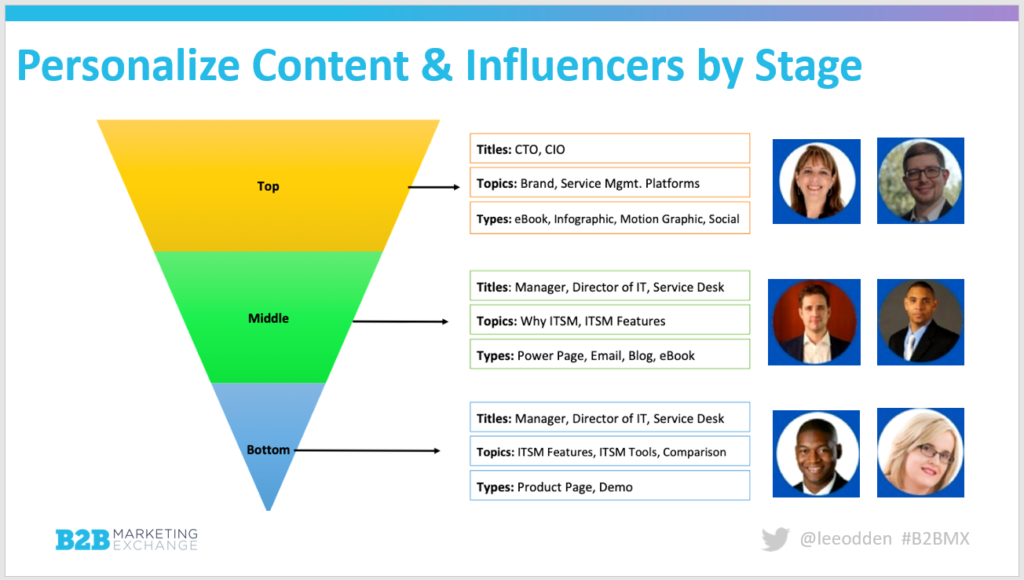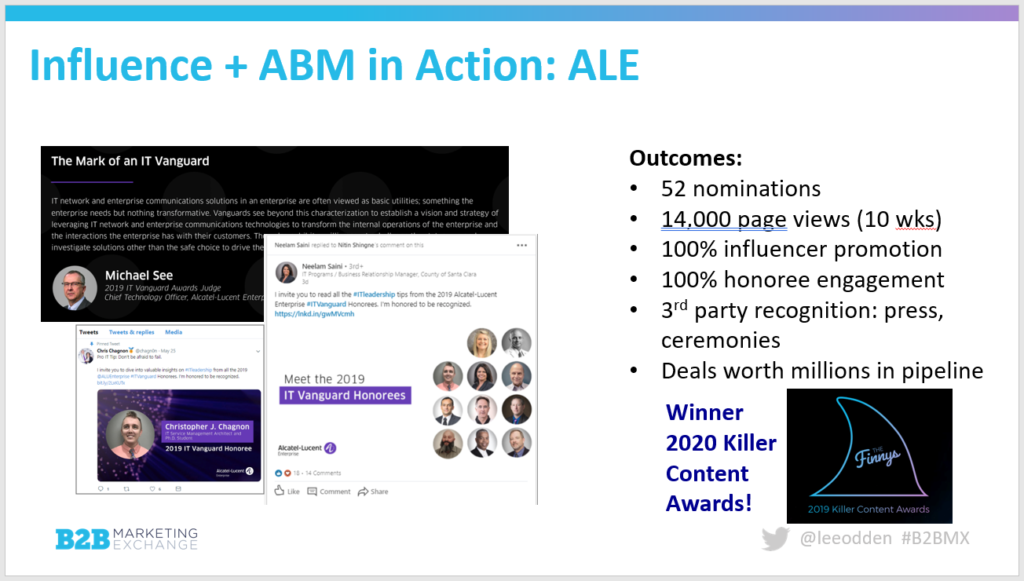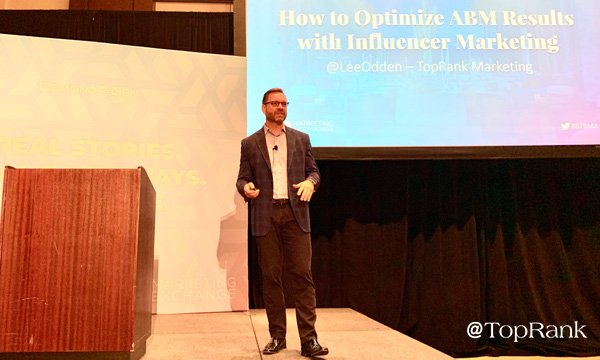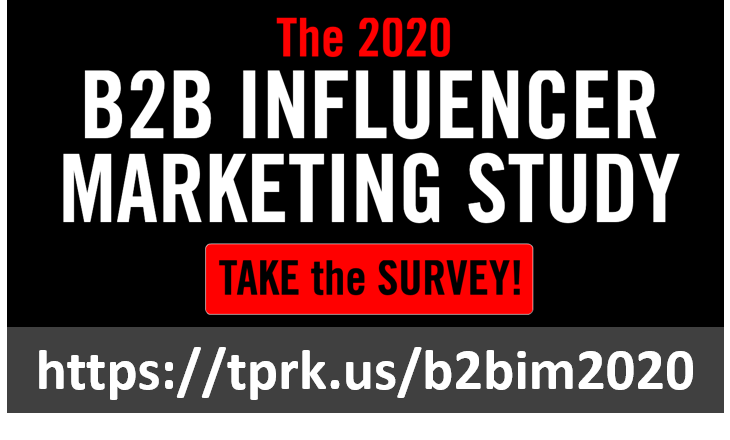Transcript of Crafting Growth-Focused Content for Your Business written by John Jantsch read more at Duct Tape Marketing
Back to Podcast
Transcript

John Jantsch: Want to quickly send amazing looking emails to your prospects and customers in just minutes? AWeber is the market leader in making email marketing powerfully simple for a small business. Visit aweber.com for a 30-day free trial.
John Jantsch: Hello, and welcome to another episode of the Duct Tape Marketing podcast. This is John Jantsch, and my guest today is Lance Cummins. He is the president of Nectafy, a company billed as a growth content company. We’re going to talk about his entrepreneurial journey, how his company runs, and maybe what else he’s up to on the side. So Lance, thanks for joining me.
Lance Cummins: Thanks so much, John. I appreciate it.
John Jantsch: So let’s start off with your story. How did you kind of get to this place where you are the president of the company and doing other entrepreneurial things?
Lance Cummins: You’re going to love this. I’m going to give you the full story but super quick. So back in 1996 I wanted to start my own business and I asked my mom, “Hey, what businesses could I do from home?” And she’s like, “Well, this web design thing is actually pretty interesting. Have you thought about that?” And I was like, “Well, okay.” I bought a book called Teach Yourself HTML in 24 Hours, and I didn’t realize that that meant like 24 days of one-hour sessions maybe. I spent like 24 hours and built a website and said, “I’m open for business. Let’s do this.”
Lance Cummins: That business lasted exactly two years because I had no idea how to run a business, but it got my interest in all things web, so learned a ton. I was actually building like ASP custom shopping carts, all this crazy stuff that I don’t even know how to do now. I’ve forgotten everything. It was a lot of fun.
Lance Cummins: I got a real job. Well, I got somebody else paying me, at least, for a little while. This is where my story gets crazy. So I actually got involved being a music pastor at a church in Georgia. I then moved my family to Kansas to be a music guy out there. We did that for six years, and then we decided we would move to Boston because … This is where my marketer brain kicked in. I was like, “There are not a lot of the type of church that we are at out there in Boston. Let’s go out there and start one.”
Lance Cummins: So I literally moved my family, my three kids and my wife and I, to Boston. We didn’t know anybody. I didn’t do like the … I don’t know if you know anything about how people normally start churches, but they raise all this money and do all this crazy stuff. I didn’t do any of that. I was just like, “Let’s see what happens. This is going to be a great adventure.” So we moved out there and I expected to find a job. I was just going to get hired somewhere. Well, I didn’t really think about it. Your resume looks a little odd when you’ve been in church work for like 12 years, so nobody hired me, and I thought, “Oh, I guess I need to start my own business again.”
Lance Cummins: So I, man, I just quickly brushed up on what I remembered. I did a ton of crash course learning, started building websites, and then I realized, there’s this moment when you build a website after you have the design usually, you say to the client, “Hey, can you just send over the copy for the website?” And then there’s this big panic moment because they don’t know what to write, and so I started doing that, and that’s when I realized there was a big opportunity in content, all that good stuff. So that was 2010.
John Jantsch: Awesome. So I built maybe a dozen websites in FrontPage.
Lance Cummins: Okay. Yeah.
John Jantsch: Microsoft builder that … One of the early ones on there, and it just, it scares me to think about that now.
Lance Cummins: That was pretty sweet. Like that was the first time you could use templates because otherwise you were coding in straight up HTML in text editor.
John Jantsch: So I got to know, what’s in the name? What’s up with Nectafy?
Lance Cummins: All right. So, in full disclosure, you mentioned about your name, Duct Tape Marketing, when you and I were offline a second ago. So I actually named my company … You’re going to laugh at me now … Nearly Freelance, because you know, my name’s Lance. Yeah, there’s too many things going on there. And after two years I’m like, “I need something different. I’m tired of people calling me freelance, almost free, completely free.” So we lived in Boston. I love the Boston accent. It’s still one of my favorite things about Boston, and my neighbor Kyle, he’d come over, and he had the strongest Boston accent. And so I loved that, and then I loved the concept in nature, this whole thing with how nectar works is really crazy to me because basically plants are producing stuff that all the little bugs and the bees love, right? They fly in and grab it, and meanwhile pick up whatever pollen the flower has and spread it. And so this is about necta. Yeah, [inaudible 00:05:27] little Boston accent. Nectafy. I don’t know. It’s lame.
John Jantsch: Well, it’s one of those things that is meant to be memorable, but I’m sure I’m not the first person that’s asked you, “What’s with the name?” All right. You are billed as a growth content company. I know this is going to sound like a stupid question, but how would you define what content is today for marketers?
Lance Cummins: Yeah. So I mean, content, as far as I can tell, for marketers, is literally anything that you put out that’s I think particularly designed to educate, entertain, inspire, not necessarily directly sell. That’s what differentiates us from just advertising. What do you think?
John Jantsch: Yeah. Well, I mean, that’s the thing. I think it’s a fine line. I almost have come to say any way in which you communicate is some form of content. Video, email, audio, even sales copy that is meant to sell. I mean, in a lot of ways, I think that collectively is content. Well, let me ask you this. In the time that you’ve had your company, how do you feel like it’s … How has the role of content changed in your view?
Lance Cummins: I think content has gone through some interesting developments, let’s say. So you know, 10 … What was it, 10, 12 years ago, HubSpot really kind of popularized this inbound marketing thing, which it wasn’t new, it’s just they put a term around it, and that was sort of the wave that we started to ride. But we realized pretty quickly that what happened is there was a lot of emphasis on the tactics of inbound marketing, and a failure to recognize that without genuine human quality to what you write and a connection, it’s just crap. I mean, it doesn’t matter if you get somebody to the site. If what they read isn’t something that makes them really be glad they found that, it’s a waste.
Lance Cummins: And so to me that’s one of the big iterations that’s happened with content is that it went from this game where you play and you try to beat Google and trick them to get somebody to your site, and you forget like this is a human on the other end reading this. This is so strange that you would game somebody to become a client.
Lance Cummins: So, for us, the evolution is content now, a computer can generate most of the content that inbound marketers used to just regurgitate constantly, and so this is about, how do we as humans tell a human story? How do we explain something so that … The litmus test for us is if your ideal customer, we call them personas like other geeky marketers, is if when they see that piece of content, they’re glad they found it. Simple test. For us, that’s how it’s changed.
John Jantsch: Yeah. And I think that in the early days it was sort of novel that people had content, and obviously like you said, the search engines didn’t have as much content to chew through so they would surface your content. It was actually a pretty easy game in some ways, and I think that, even on the recipient side, the behavior of consuming content was in its early stages, and so the expectation wasn’t there. People weren’t deluged with it, and so I think what’s happened now is, because it’s become an absolute significant part of the buyer’s journey … I mean, people aren’t buying today without content and without a journey that’s led by that content, that, as you just said, the bar is just so significantly higher than it was. I think you can say that for all the tactics. I mean, email marketing used to be really easy. A lot of people in the early days of social media, it was pretty much an easy game to try to attract people. So, I think the role has changed as much as anything because of the expectation of the buyer, I think.
Lance Cummins: That’s a really good point. Yeah. The thing too that we’ve seen is when people … Because they’re better at it, because customers are better at it, they can identify when it’s poorly done a lot more quickly. Right?
John Jantsch: Yeah. Yeah, and I think that’s the … not that there’s strict divisions for generations, but you look at millennials particularly as a buying group, and because I happen to be a parent of several, I know this behavior quite well. They’ll go to a website and they’ll bounce off of that in a couple of seconds if it doesn’t act like they think it should act, and I think that’s what marketers are up against, whether they know it or not.
Lance Cummins: John, that’s actually how I selected my accounting software back when I started my company, which is pathetic. That’s a terrible reason to choose accounting software. I got to the website and I went, “Yeah, I like this. I’m going to use their software.”
John Jantsch: I’m going to guess it’s FreshBooks.
Lance Cummins: I actually use Xero out of New Zealand.
John Jantsch: Oh, Xero? Yeah. Yeah, yeah, yeah, yeah, yeah.
John Jantsch: Hey, with more than 20 years of proven success, helping more than one million small businesses around the world, AWeber’s powerfully simple email marketing solutions make it easy for you to connect with people and build your business. Quickly and easily build lists of contacts, send and automate emails and newsletters, and analyze your email performance with AWeber. And if you need help, AWeber’s customer solutions team is available 24/7 from their Pennsylvania headquarters to help you grow your business through email marketing. Visit aweber.com for a free 30-day trial.
John Jantsch: We just talked about what content is, the role of content, how it’s changed. You defined something called growth content as being kind of different than maybe the inbound marketing approach. So you want to elaborate on that?
Lance Cummins: Yeah, absolutely. So it was sort of a response to what we were seeing. We were using the phrase inbound marketing an awful lot, and because HubSpot’s fantastic at recruiting people and recruiting companies in all walks of life, suddenly there’s all these people talking about inbound marketing this and inbound marketing that, and it’s like, “Oh, boy, this is all messed up.” And so we really thought like, “Let’s just think about what we’re really, really good at, what we think really makes a difference in the marketplace, and then let’s figure out what identifies that.”
Lance Cummins: So for us, we decided to call it growth content because it is content specifically designed to grow organic traffic. So we, for instance, don’t necessarily write … We don’t write like narrative pieces on a website. We don’t write just great stories, even though perhaps for some brands that would be a worthwhile effort. That’s just not what we do. So really, it’s like old-school SEO, although we never use those letters ever. I’ll have to go wash my mouth out with soap after this interview. Old-school SEO with really genuine, high quality content that’s created with subject matter expert interviews, but everything is around growth. So like when we’re creating the calendars, this is designed for growth. If it’s not designed for growth, we’re not going to do it. That’s where we kind of married those two words together.
John Jantsch: Well, where’s the separation between growth and just awareness? Is awareness just a step? I mean, because again, a lot of times the first thing we have to do is let somebody know we’re out there or that we understand what their problem is. Is that growth or is that before growth?
Lance Cummins: Yeah, that’s a great question. So for us, to geek out a little bit about the buyer journey, right? That top of the funnel is an awareness stage. So for us, that content is vital, and it probably just serves an awareness function, but awareness is the leading indicator of growth, so we definitely write stuff around that.
John Jantsch: There are many types of content that people can consume, and maybe in some cases their preferred method to consume content. I know when my books come out, for whatever reason, the audio book is a few weeks later or a few months later, and I always hear from people. It’s like, “I only listen to audio books. When’s it coming out?” Are there forms of content that you would say today people need to be doing more of, like audio or video for example?
Lance Cummins: Yeah. So it really depends on your audience, right? Like you kind of alluded to that a minute ago. For our clients, they’re all what we call brainiac B2B clients, which basically means they have a complex product or service. Their persona may or may not be technical. So each one of those, first of all, we just look at like, how do they consume stuff? Right? For a lot of people, ironically, in 2020, it’s still written, which just feels very arcane, but still effective. For younger demographics, you’re getting into video, explanation of what’s even on the page. Like let’s just watch this video instead of reading the two paragraphs, which blows my mind because I’m not that demographic. Then there’s the thing coming that I think is really cool and it’s kind of the marriage of several of these ideas, and basically it’s like the revival of radio, much like we’re doing here with podcasts, right? Is audio content on your website, basically audio content on demand for every type of article that you can do. So I’m familiar with companies that are spinning up content that then you can add it into custom podcast playlists to listen to on the ride home and to work and so forth. Like that’s really a really cool idea and another way to get your content in front of people that I think really marries pretty well with where things are headed.
John Jantsch: Yeah. I’ve been such a proponent of the audio content. In fact, I wrote my obligatory trends for every year post, and I put audio content on there as a trend. That sounds sort of absurd. I’ve been podcasting since 2005, how’s that a trend? But I think what you just mentioned is people, like a lot of things, they saw it as a podcast, as like, that was a thing, but a podcast is nothing more than audio content. I think now people are just finding ways to distribute audio content, and to me, the beauty of it is the portability, like you just mentioned. For me, videos, I can’t sit still in front of a monitor and watch something for 20, 30, 40 minutes, but I could put it in my head and go walk for 20 or 40 minutes, and I think that that’s what … to me, that’s one of the great appeals of audio content.
Lance Cummins: Yeah, I love that. I think it’s also interesting, a friend of mine pointed out that audio content, especially in mass distribution, so like think Kmart Bluelight Special, “Attention, shoppers,” basically that audio content is really coming back into effectiveness because everybody’s face is buried in their own device. The only way to get their attention in mass would be through sound, and I think that’s a pretty interesting assessment.
John Jantsch: So you have a little side hustle that, if people were … This is just an audio-only podcast, as listeners know, but I do record with video too, and Lance has a nice little background behind him because we’re all on these video chats in these interviews and things like Zoom and Skype and different platforms. So you want to talk a little bit about that idea?
Lance Cummins: Sure. So when we started Nectafy, we hired remote team members, and that wasn’t necessarily on purpose that I set out to build a remote company, but that’s what we have, and we love it, and so we also use Zoom for everything, for video calls with all of our clients. I use it for all my sales stuff, marketing stuff. And I realized, “Man, we got to do something about how we present ourselves as a team. Like I just want to present a professional look. It doesn’t have to be formal or scary or anything. It just needs to be consistent.”
Lance Cummins: So I started like, I bought some pipe and drape, I did the video backgrounds you can use for video, photography. I bought all this stuff and sent it to my team, and they would use it for a little bit and then stop using it because they go, “Man, this is just super inconvenient. It doesn’t fit in my room. This is bigger than my room,” all this great stuff.
Lance Cummins: So I’m like, “Okay, there has to be something.” I couldn’t find anything, so I said, “DIY guy, I’m going to figure out a way to build this myself,” and came up with some ideas, and then I realized, “Oh, my, this is something that people could actually use because it’s tailored for remote workers doing video stuff. It’s just the right size, no bigger, fold it down.” So we started a company called Anyvoo. It doesn’t mean anything. My daughter helped me name it. And so the whole idea is that these are portable backdrops that are branded, can break down into a … it ends up being in a 6 x 6 x 26 inch long thing, portable. We’re actually in prototype phase right now. We’re shipping them that … They don’t break down all the way. They’re still kind of a little bit bigger, but we’re getting a lot of great feedback right now. You can go look at anyvoo.com and kind of see what we’re doing. If you’re interested in participating in that, you can just fill out the contact form or send me an email.
Lance Cummins: My kids and I are doing this, so this is part of what makes it fun. In fact, my daughter, we’re actually at Anyvoo right now. I zoomed out so you could see the edge of the drop and all this. My daughter’s back there helping me sew. My son helps assemble these things. We’re learning about business together, so it’s been a lot of fun.
John Jantsch: Yeah, that is awesome. It kind of reminds me of the old projector screen that you’d bring in and kind of pop up, kind of the school size, not the giant thing. All right, so Lance, tell people how they can find out more about Nectafy and then obviously Anyvoo as well. And I hope you have your kids designing that website for Anyvoo too.
Lance Cummins: That’s right. We’ve got something up there going. So nectafy.com is our growth content company. That’s if you’re a brainiac B2B company, you sell a complex product or service, and you’re trying to actually grow your leads and traffic with really high quality content in pretty complex areas. That’s nectafy.com. Anyvoo.com is if you’re a remote worker and you want to really present yourself professionally on video, get one of these drops. We’re in prototype phase, so if you mention this and you send me an email, lance@anyvoo.com, I’ll send you a coupon code so you can get it really cheap since it’s in prototype phase, and give me some feedback. We’d love to build one for you.
John Jantsch: Awesome. Well, Lance, thanks for coming, sharing your journey and about your various ventures, and hopefully we’ll run into you soon out there on the road.
Lance Cummins: Thanks so much, John. I really appreciate it. It’s been fun talking with you.
from Duct Tape Marketing https://ift.tt/384P3o3
via
IFTTT


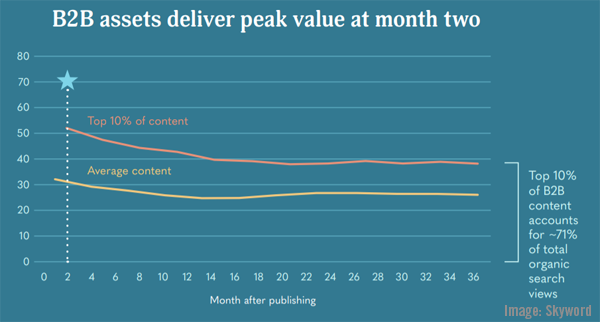
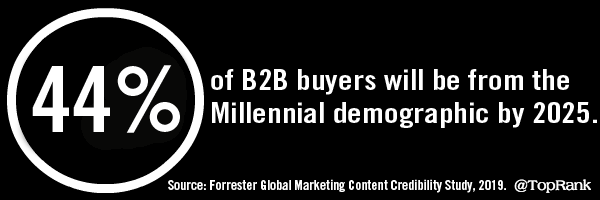 How Businesses Handle Customer Reviews [Infographic] Over 35 percent of businesses often or always use positive reviews in their marketing efforts, with Google, Facebook, and Yelp being the three platforms most often monitored for online reviews, according to recently-released survey data focusing on how reviews are used by businesses.
How Businesses Handle Customer Reviews [Infographic] Over 35 percent of businesses often or always use positive reviews in their marketing efforts, with Google, Facebook, and Yelp being the three platforms most often monitored for online reviews, according to recently-released survey data focusing on how reviews are used by businesses. 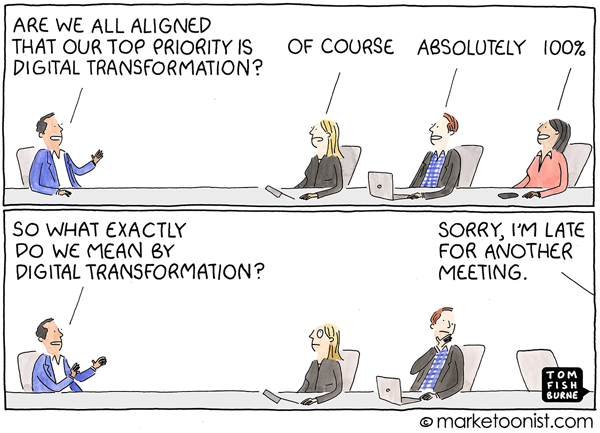 A lighthearted look at what is digital transformation? by Marketoonist Tom Fishburne —
A lighthearted look at what is digital transformation? by Marketoonist Tom Fishburne —  On this episode of the Duct Tape Marketing Podcast, I visit with Lance Cummins, founder and President of
On this episode of the Duct Tape Marketing Podcast, I visit with Lance Cummins, founder and President of 
